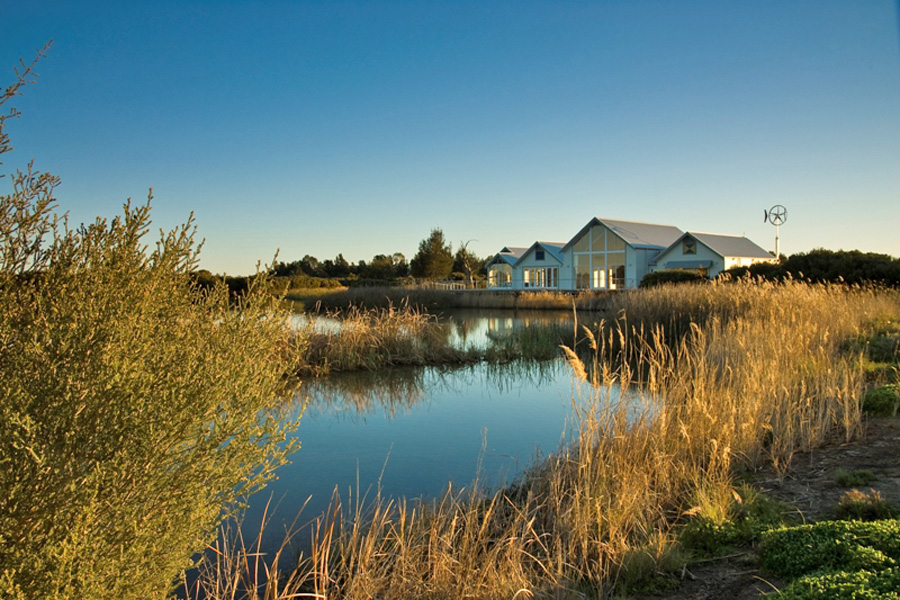Stormwater treatment
Urbanisation replaces natural vegetation with impervious surfaces such as roads, driveways, and building roofs, resulting in increased runoff rates and volumes, as well as changes to water quality and pollutant loads in stormwater runoff. The increase in impervious areas in urban catchments is a prominent source of stormwater contaminant, including sediments, nutrients, litter, heavy metals and chemicals. Stormwater treatment aims to reduce pollutant loads entering downstream waterways by filtering and absorbing nutrients such as nitrogen and phosphorus, and trapping/removing litter and sediments from urban runoff.. Some key examples are bioretention systems, wetlands, permeable pavements, and the use of rainwater tanks or stormwater harvesting.

Waterproofing the West
South Australia
A region wide system that harvests, treats and stores stormwater and distributes recycled water through western Adelaide, sustaining a growing economy and enhancing the natural environment. The project will result in sound water management and will treat and inject up to 2,400ML of recycled water each year.
Randolph Avenue Streetscape Upgrade
South Australia
Inclusion of raingardens in a road environment in Adelaide to improve amenity and improve urban stormwater quality.
Gladstone East Shores Precinct
Queensland
The Gladstone East Shores Precinct is a major new recreational hub for the City of Gladstone located on the foreshore of Auckland Inlet. The integrated parkland design features an innovative application of ‘wicking bed’ technology to store locally harvested stormwater runoff for passive irrigation of a high use open lawn area.
Kings Square Raingardens
Western Australia
As part of the Kings Square development’s approach to sustainability, a network of raingardens were incorporated into the streetscape design to provide stormwater treatment, protect sensitive groundwater systems that flow into the nearby Swan River, improve the long term health of street trees, and enhance amenity.
A new community at Officer
Victoria
Collaborative planning and design delivered habitat-rich 100m wide waterway corridors which included 'eco-sponges' which hold and infiltrate stormwater runoff to minimise impacts on the waterway.
South Bank Parklands Rain Bank
Queensland
A public parklands in the heart of Brisbane has implemented an alternative water supply scheme for irrigation and toilet flushing by utilising harvested stormwater and filtered backwash from pools and water features.
Forest Park Ecological Wetland
China
Transformation of a parklands area to a multi-functional landscape in Kunshan, China. The parklands include ecological wetlands that provide water quality treatment for the adjoining canal network, and provides storage of flood water when needed.
Angus Creek Stormwater Harvesting and Reuse Scheme
New South Wales
The Angus Creek stormwater harvesting and reuse scheme (the scheme) extracts flows from Angus Creek and harvests stormwater runoff from hard surfaces to irrigate the the Blacktown International Sportspark and neighbouring reserves, supplying up to 200ML of fit-for-purpose water each year.
Marrickville West Primary School eco water garden
New South Wales
This project involved diverting water from a council drain into the grounds of Marrickville West Primary School, filtering it and then harvesting it to create a green space for the school and the local community.
Victorian Planning Provisions Amendment
Victoria
On 26 October 2018, Amendment VC154 changed the Victoria Planning Provisions (VPP) and all planning schemes, to introduce new stormwater management provisions for urban development and amend State planning policies related to integrated water management (IWM).